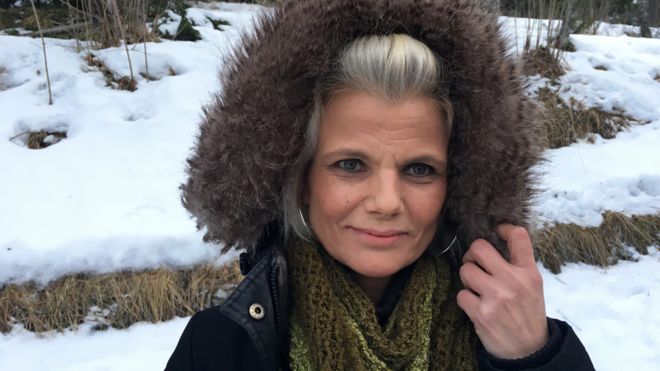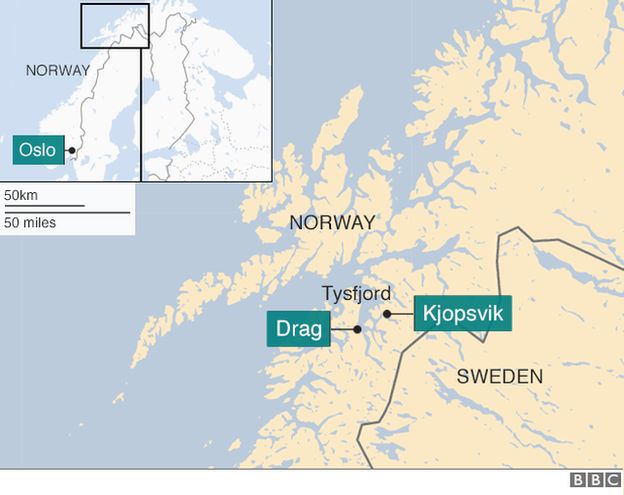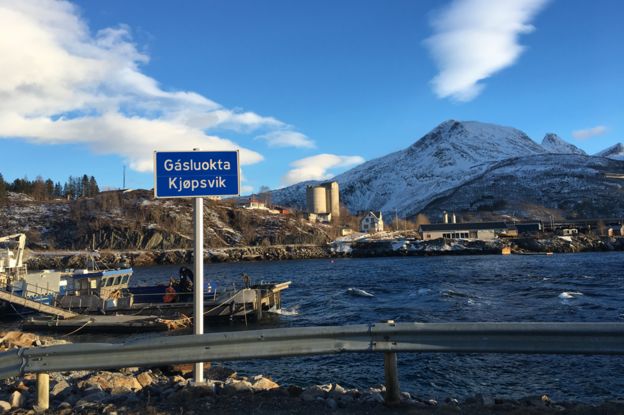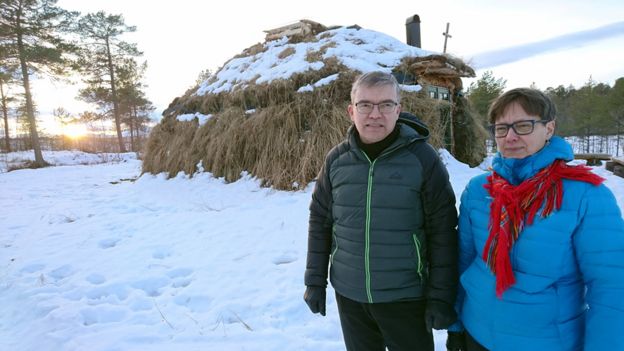The community of 2,000 people with 151 cases of sex crime

Norwegian police have documented 151
cases of sexual abuse, including child rape, in one small community of
2,000 people, north of the Arctic circle. The offences occurred over
decades - between the 1950s and 2017 - but were only recently uncovered.
How could such serious sex crimes go unchecked for so long?
Nina
Iversen says she has always been someone who talks - and has often
talked about what happened to her when she was growing up in Tysfjord. "I always spoke about it. From when I was 14 years old, I thought: 'I'll write a book about this abuse - I'm going to stop it.' But of course, I wasn't able to."
When she was a teenager, young people confided in each other about the sexual abuse they had experienced, but adults would not listen.
"We were called whores and liars. There were many of us who were treated like that. And we were spat on if we tried to talk about it," she remembers.
Iversen's abusers were her relatives, so as a child she lived family life in a perpetual state of terror.
Now 49, she no longer lives in Tysfjord, but says she still doesn't feel safe.

About half of those living here are from the indigenous Sami community - some of Scandinavia's earliest inhabitants, who live in Norway, Sweden, Finland and Russia. But Sami people accounted for about two-thirds of the 83 victims and 92 perpetrators identified in the police report on sexual abuse, and discrimination and racism had an impact on how the story played out.
By 2005, Nina Iversen was a mother. Worried about her children, and the threat to them of sexual abuse, she was in touch with child welfare services. Again she spoke about her own experiences. She told her doctor.
"I told everyone," she says. "But to be listened to, you had to have the right background. Someone like me, who comes from a poor family, just got ignored."

At that time, Anna Kuoljok, a deacon in the Norwegian Church, and her husband Ingar, a lawyer - both of them Sami - were in touch with 20 families whose children had been sexually exploited. The couple spoke up at public meetings attended by local politicians, health workers, the police and other authorities.

"They were just not comfortable with these kinds of stories," says Ingar. "They didn't know how to handle it."
The Mayor of Tysfjord, Tor Asgeir Johansen, remembers those meetings too but has a different explanation for what went wrong.
"They didn't get a grip on things because people wouldn't tell," he says, referring to the victims of sexual abuse. "The community isn't the police - we can't go around looking in people's homes. People must come and ask for help."
Reporting sexual abuse is difficult for many victims, regardless of their cultural heritage. But in Tysfjord there was a further reluctance to speak out - in many cases the Sami people did not trust the police or authorities.
At the same time, Nina Iversen - and she was not alone - was trying to tell her story, but was not listened to.
Nearly another decade would pass before the abuse story broke in the press. Those years were difficult and lonely for Nina Iversen. She was depressed, and posted a poem about sexual abuse on Facebook, writing 'TYSFJORD' in angry block capitals.
Another local woman with experiences similar to Iversen's saw it and got in touch. She said she was already talking to two freelance journalists. And then the ball started rolling. Nina contacted other victims she knew, including women in her extended family. On 11 June 2016 a national newspaper, Verdens Gang, published the story of sexual abuse in Tysfjord based on the testimony of 11 survivors - women and men.

No comments: